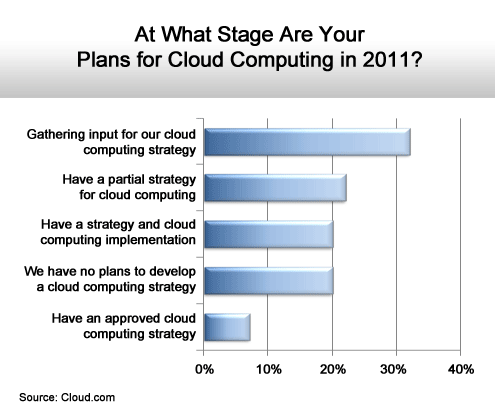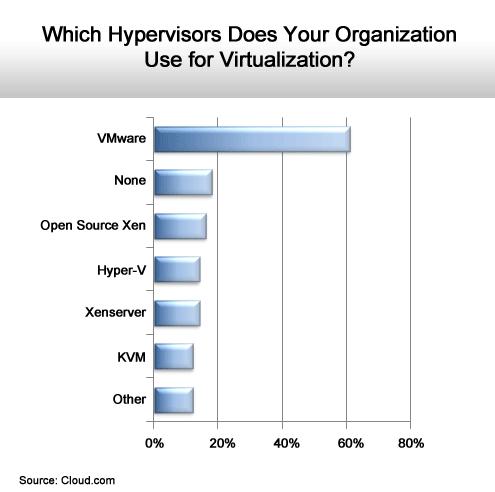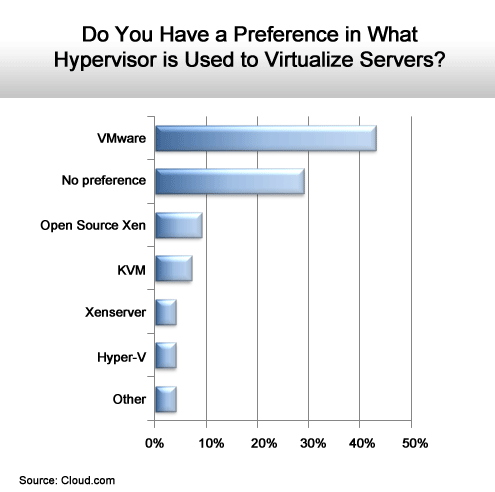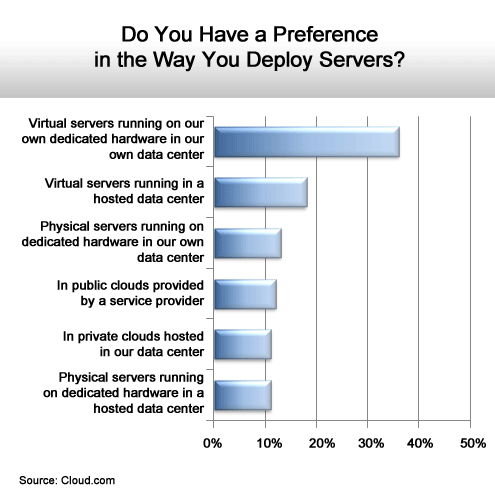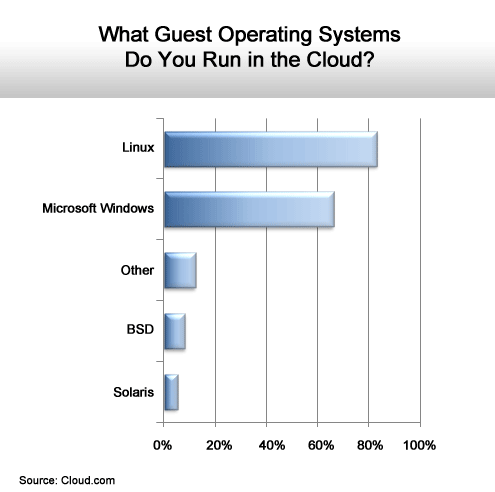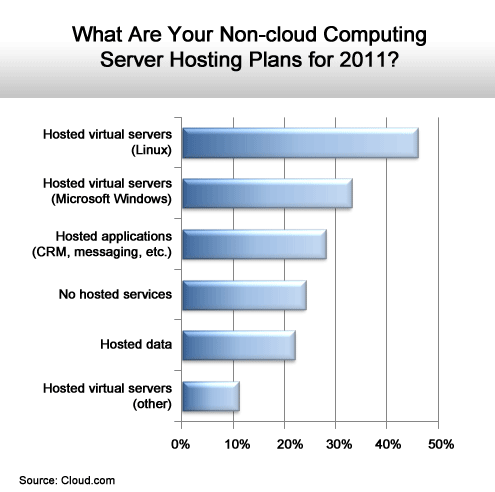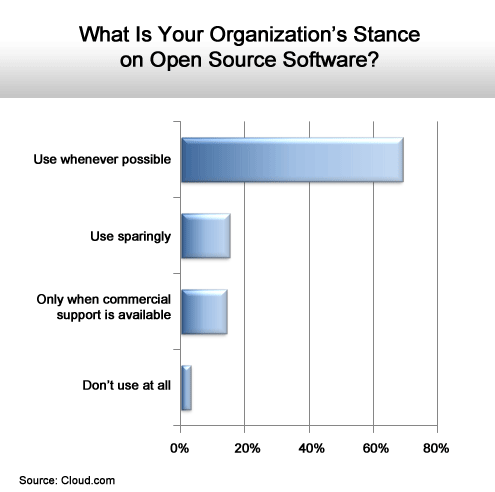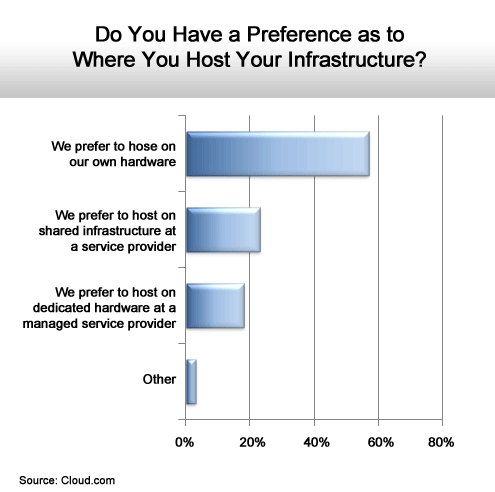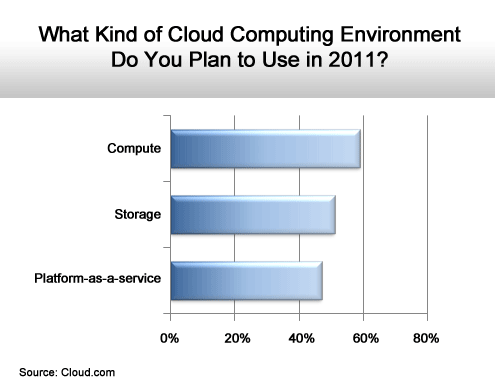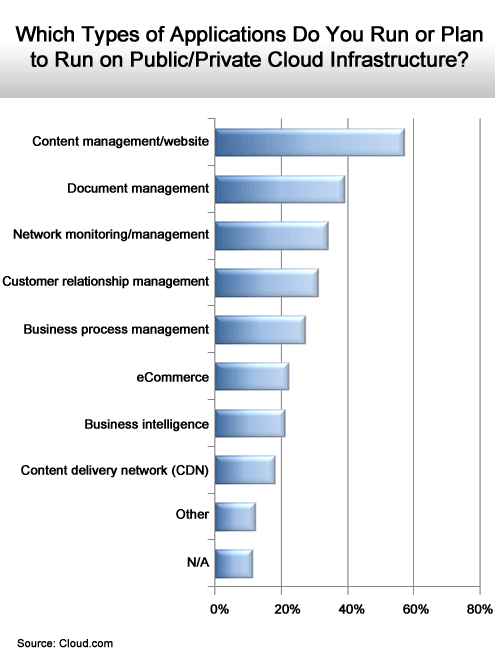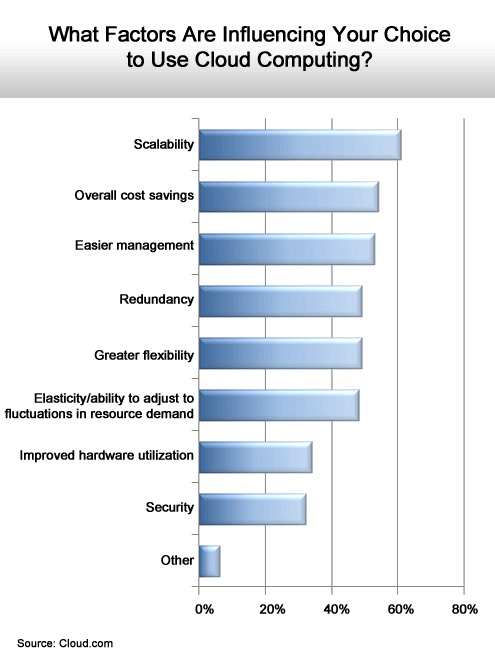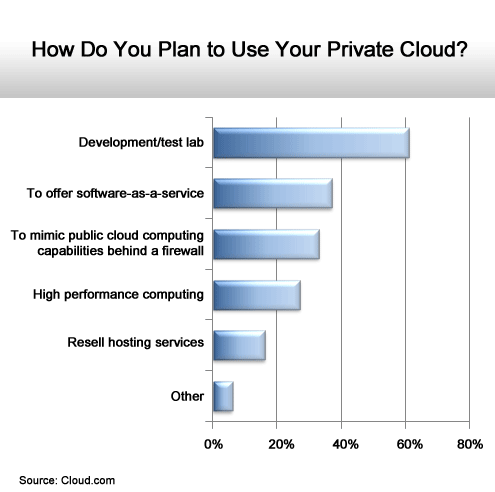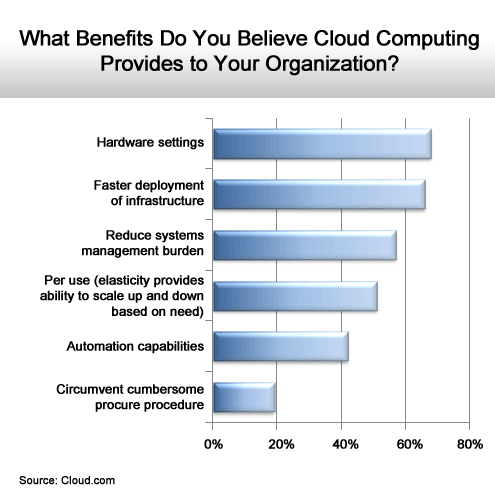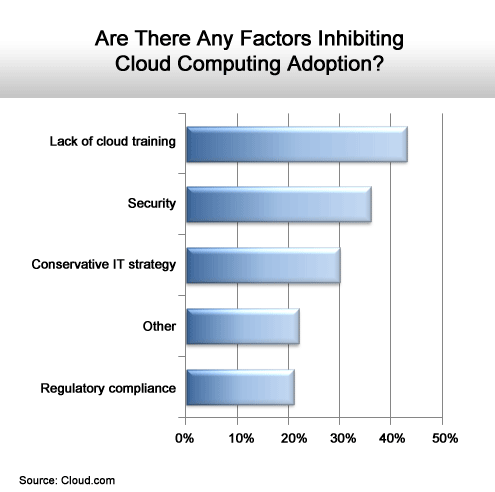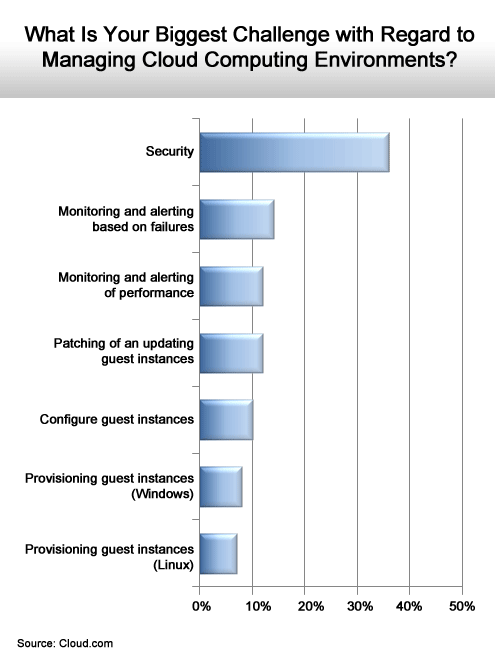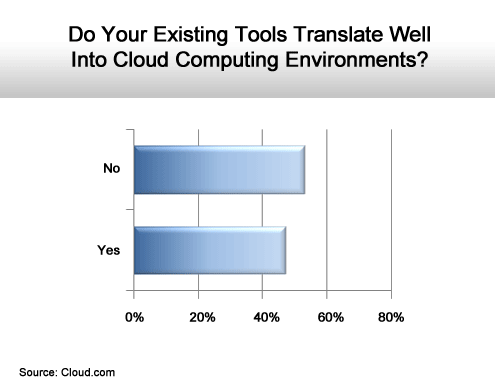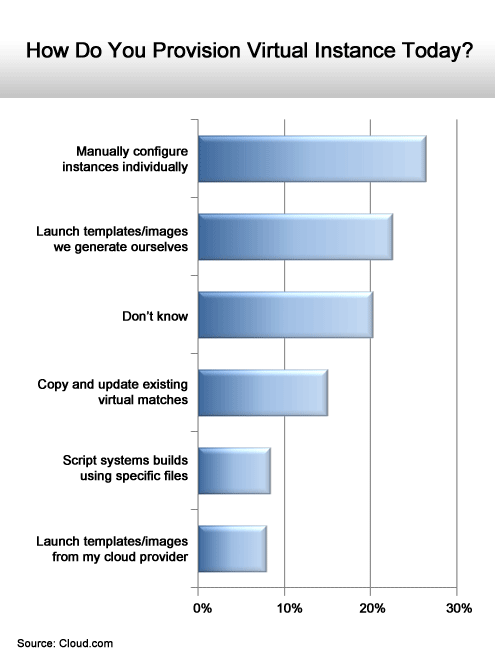
While cloud computing may not involve a lot of new technologies, it certainly represents a new way of managing IT. In many cases this will not only change the workflow within the IT organization, it will often result in a complete reorganization of the IT department. Anyone who has ever been close to an IT department knows that such realignments take a fair amount of time to execute.
The survey finds that while most IT organizations are either still researching their options or have a partial implementation of cloud computing in place, the respondents strongly favor private cloud computing deployments that run on their own internal systems. And while cost savings is a major issue when it comes to cloud computing, the survey also finds that scalability is seen as the dominant benefit to be derived from cloud computing.
There are, of course, still plenty of concerns when it comes to security. But the biggest issue with cloud computing may come in the form of all the nuances associated with the term, says Peder Ulander, chief marketing officer for Cloud.com. IT organizations are having a hard time distinguishing between what constitutes a well-run data center versus an actual private cloud. Investing in data center infrastructure management (DCIM) tools to manage virtual servers does not necessarily mean that the IT organization has created a private cloud. This is one of the reasons why there needs to be more emphasis placed making sure that cloud computing as defined by the National Institute for Standards and Technologies (NIST) becomes standard operating procedure within IT.
In the meantime, Cloud.com, says Ulander, is trying to facilitate the “onboarding process” for cloud computing by partnering with companies such a RightScale to set up a myCloud service that allows customers to more easily set up a private cloud that actually runs as a “private availability zone” within the confines of the enterprise.
Clearly, something profound is starting to take shape in terms of how IT is managed in the age of the cloud. That challenge going forward is going to be getting everybody to agree on what constitutes a real cloud.
Click through for results from a survey on cloud computing from BitNami, Cloud.com and Zenoss.
Lots of research under way.
VMware is still dominant, but others gain.
No preference is a strong second.
On-premise leads, but not in a commanding way.
Linux and Windows top the list.
Lots of interest in hosted virtual servers.
A strong preference.
Most would prefer to stay on premise.
A little bit of everything.
Content and document management top the list.
Scalability leads over cost.
Application development leads by a wide margin.
Hardware savings and flexibility run neck and neck.
Training will become a bigger issue.
Security is still the top issue.
It’s a 50-50 split.
Lots of manual intervention.



